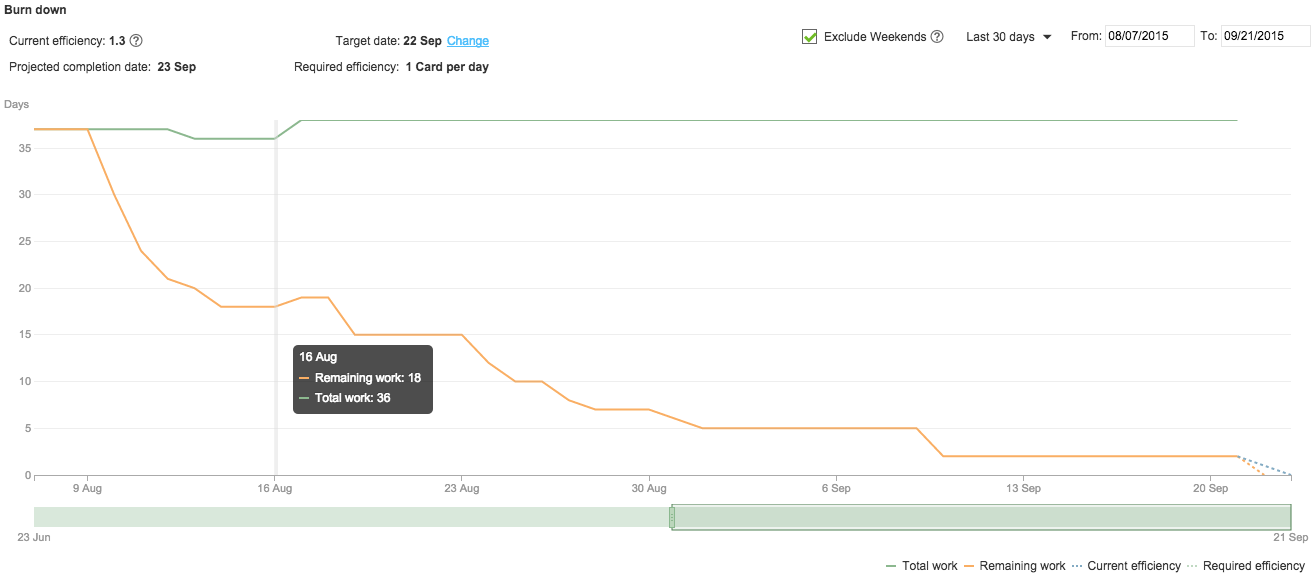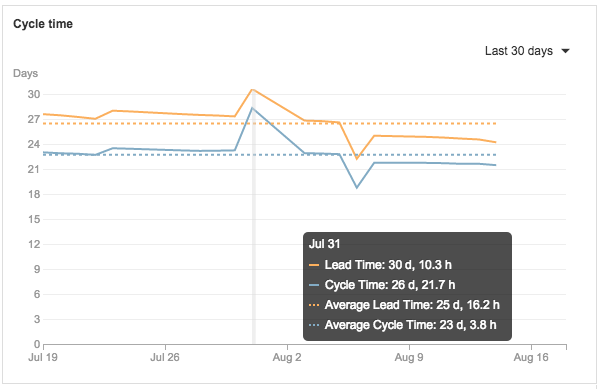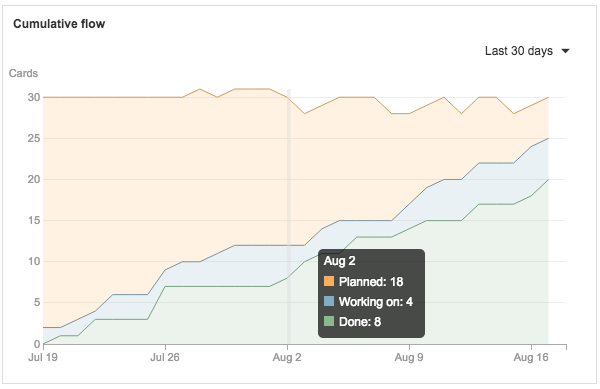One of the most challenging aspects of project management is having to steer multiple projects in the right direction. Keeping up with the ever-changing workflow across projects can feel like fighting an uphill battle. Fortunately, managing projects doesn’t have to feel like a constant struggle thanks to a visual and collaborative approach known as the Kanban method. But how can you incorporate the Kanban method into your project management initiatives? Learn more about the top three Kanban metrics for tracking progress and how you can use them.
Getting Started with Kanban
Before you start using Kanban to collaborate with various team members or departments, you need to set up an online Kanban board and grant your team members access. Once that’s completed, you can then start inviting various participants and assigning them to projects. Some advantages of using the Kanban method include:
- You can see a visual representation of the progress made on projects.
- Subtasks within a project can be created, assigned, and checked off when completed.
- Kanban boards provide a place where managers and team members can discuss projects, problem solve, and brainstorm action plans.
While manual Kanban boards (whiteboards and sticky notes) may be effective for managing small projects, online Kanban boards have gained traction with project managers overseeing multiple, large-scale projects. They need a solution that provides valuable information about multiple projects, not just a visual workflow with assignment cards. Metrics are critical not just for team measurement but to provide quick visibility to executives for quick assessment and decision-making.
If your enterprise is considering investing in a Kanban board software system, make sure to choose one that tracks metrics and generates reports. Most Kanban platforms designed for enterprise-level project management offer this service. By adopting a data-driven approach when working with Kanban boards, you get the scalability needed to manage larger tasks using this popular project management tool.
In this post, we’re going to look at three important Kanban board metrics to track to help you measure progress and optimize productivity so that the Kanban method works for you.
Metric 1: Burn Down Chart

If there’s one essential metric that every project manager using Kanban should be tracking, it’s the burn down chart. This metric gives you a visual representation of the number of tasks planned and the number of tasks completed within a specific Kanban board. Moreover, the burn down chart also helps you with predicting future performance by indicating when projects (or tasks within a project) will be completed if progress continues moving at the same pace.
Metric 2: Lead and Cycle Time Chart

This metric lets you see the average number of days your tasks have been worked on over a specific time period. Use this assessment to look at the entire cycle of a project or between any two custom points of time during the project’s lifecycle.
The lead and cycle time chart is helpful for better understanding the following information about your projects:
- Identifying when projects are being completed efficiently.
- Pinpointing project bottlenecks.
- Evaluating the speed at which projects are being completed.
Metric 3: Cumulative Flow Chart

The cumulative flow chart shows an aggregated view of your project cards, which are arranged in the following three categories: Planned, working on, and done. This is helpful for assessing the overall success of a project by giving the manager a visual representation of:
- The number of assignments team members have completed.
- Which project tasks the team is currently working on.
- Tasks which are waiting to be started.
Along with measuring performance, the cumulative flow chart is also useful for helping managers make informed decisions when delegating tasks – especially when working on big projects with multiple departments. By looking at the rate at which assignments are being completed, they can see which teams are more effective at performing specific tasks.
Optimizing the Kanban Method
The future of the workplace is constantly changing. Remote work and outsourcing are becoming incredibly popular, which means that managers and employees need an effective way to collaborate with teams overseas. Kanban software makes it easy for organizations to do this by creating a platform that measures progress, displays tasks and goals, and creates an open channel of communication between all parties involved.
The power of the Kanban method lies in its ability to break up overwhelming tasks and deliver them in bite-sized chunks, making projects seem more manageable as a result. For this reason, the Kanban method is a great way to optimize your project productivity, regardless of size.
However, there’s more to using Kanban than assigning tasks on a board and monitoring metrics. You also need to implement a strategy that encourages your team to work more efficiently.
Here’s how you can do it:
- Prioritize your tasks by keeping the most important projects at the top of your work queue.
- Keep lines of communication open by encouraging on-platform communication with all participants working on tasks within a project.
- Modify and optimize team processes in real-time if the scope of the project changes.
- Choose a compatible Kanban platform that works well with your existing tools.
By tracking the data collected by your Kanban platform, you can get a better idea of what your teams have accomplished and predict their future performance. Combine this with the fact that Kanban software makes online collaboration easier and more effective, and it’s easy to see why the Kanban method is quickly becoming a favorite among project managers worldwide.





